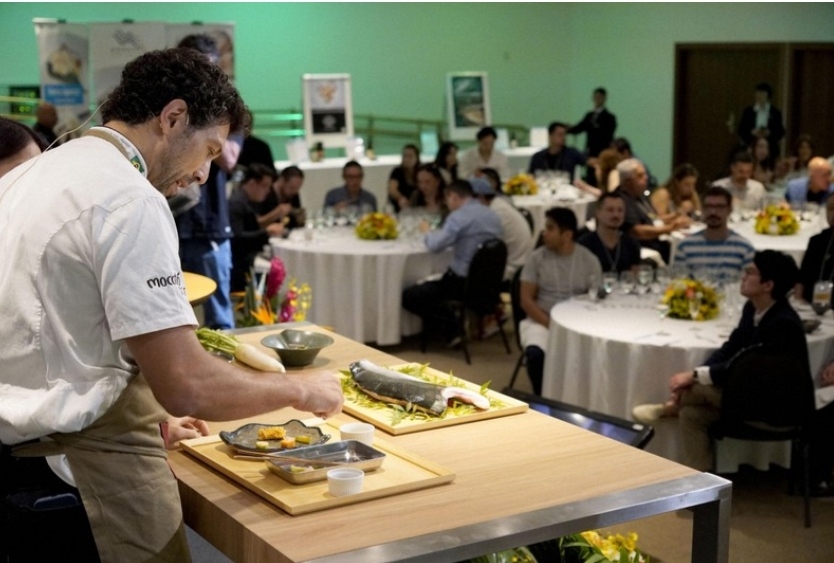Japan diversifying seafood export destinations after China ban

This photo taken on Jan. 14, 2024, shows a chef explaining Japanese seafood dishes at a promotional event in Sao Paulo, Brazil
Faced with China’s ban on Japanese marine product imports, sparked by the release of treated water from the crippled Fukushima nuclear plant, Japan’s fisheries industry has been casting a wider net, seeking new export destinations to reduce its dependency on the world’s second-largest economy.
Yasuhiro Yamazaki, president of wholesaler Yamaharu Co. at Tokyo’s Toyosu fish market, is among the many affected by the ban and has been forced to turn to new buyers.
“Our sales were slashed by half,” Yamazaki said, adding, “The ban left us with no choice but to seek new horizons.”
Yamazaki’s search for new customers has led him across the globe, from the beaches of Hawaii and the cities of Los Angeles and Houston to the marketplaces of Singapore and Malaysia.
In each location, he has personally showcased his premium seafood that has included splendid alfonsino, blackthroat seaperch, and sought-after parts of bluefin tuna, all once destined for China, in the hope of winning over new partners. The response was heartening.
“To our surprise, many countries were ready to embrace our seafood and grateful for being introduced to such exquisite flavors,” he said, adding that sales have not only recovered but have even jumped.
The company’s move is echoed in Japan’s broader strategy to mitigate the ban’s impact.
Last month, the Japanese government held an event to promote the country’s seafood in Sao Paulo, Brazil’s largest city and known for its sizable Japanese community, attracting around 100 local importers to sample dishes made with Japanese scallops and yellowtails.
“Compared to other foreign seafood, Japanese scallops and yellowtails tasted softer and had a more delicate flavor. I want to use them in my restaurant,” said a chef at a local restaurant.
China began its ban on fisheries product imports from Japan on Aug. 24, when Tokyo began releasing treated radioactive water from the Fukushima Daiichi nuclear power plant into the Pacific Ocean, dealing a heavy blow to the seafood trade, particularly scallops.
Scallops represent about a quarter of Japan’s seafood exports by value, with more than half previously destined for China, according to the annual white paper on fisheries for fiscal 2022.
In response, the government and the industry are exploring new processing and export routes, including processing scallops in Mexico for the U.S. market, moving away from the traditional processing in China.
Despite the challenges, Japan’s seafood industry has shown resilience. In 2023, the country achieved a record 1.45 trillion yen in agriculture, fisheries, and forestry exports, with the United States and Hong Kong playing key roles in offsetting the decline in Chinese sales, according to government data.
However, the future of trade relations with China remains uncertain.
“Even if China lifts the ban, the question of whether we can return to our previous relationship is unclear,” Yamazaki said, highlighting the industry’s hesitancy to rely on the Chinese market again.
“Our efforts have always been driven by a pure desire to share our delicious seafood with the people of China,” Yamazaki said. “It’s disheartening to see the neighbouring country, so close to us, becoming increasingly distant.”



